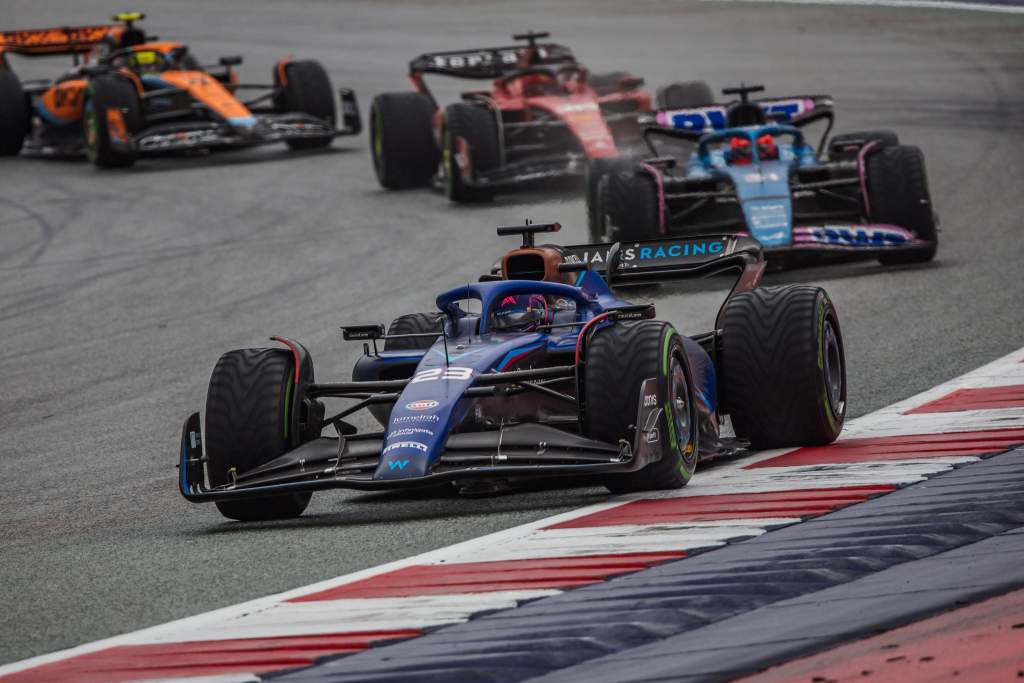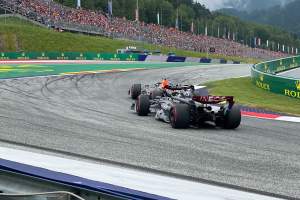Up Next

The rate at which the track dried meant the moment of decision about whether to stay out on the inters or make the pitstop for slicks came quite late in the Austrian Grand Prix sprint race. So it was always stacked in favour of staying out.
But that was a safe, protective perspective from the front. For those further back, the decision was more difficult. Of the 20 cars, eight stayed out, seven of which were running in the top nine positions at decision time. Of the 11 cars which chose to pit, only Nico Hulkenberg and Alex Albon were running in the front half of the field and there was a particular logic to their choices, to do with the struggle in keeping the inters alive.
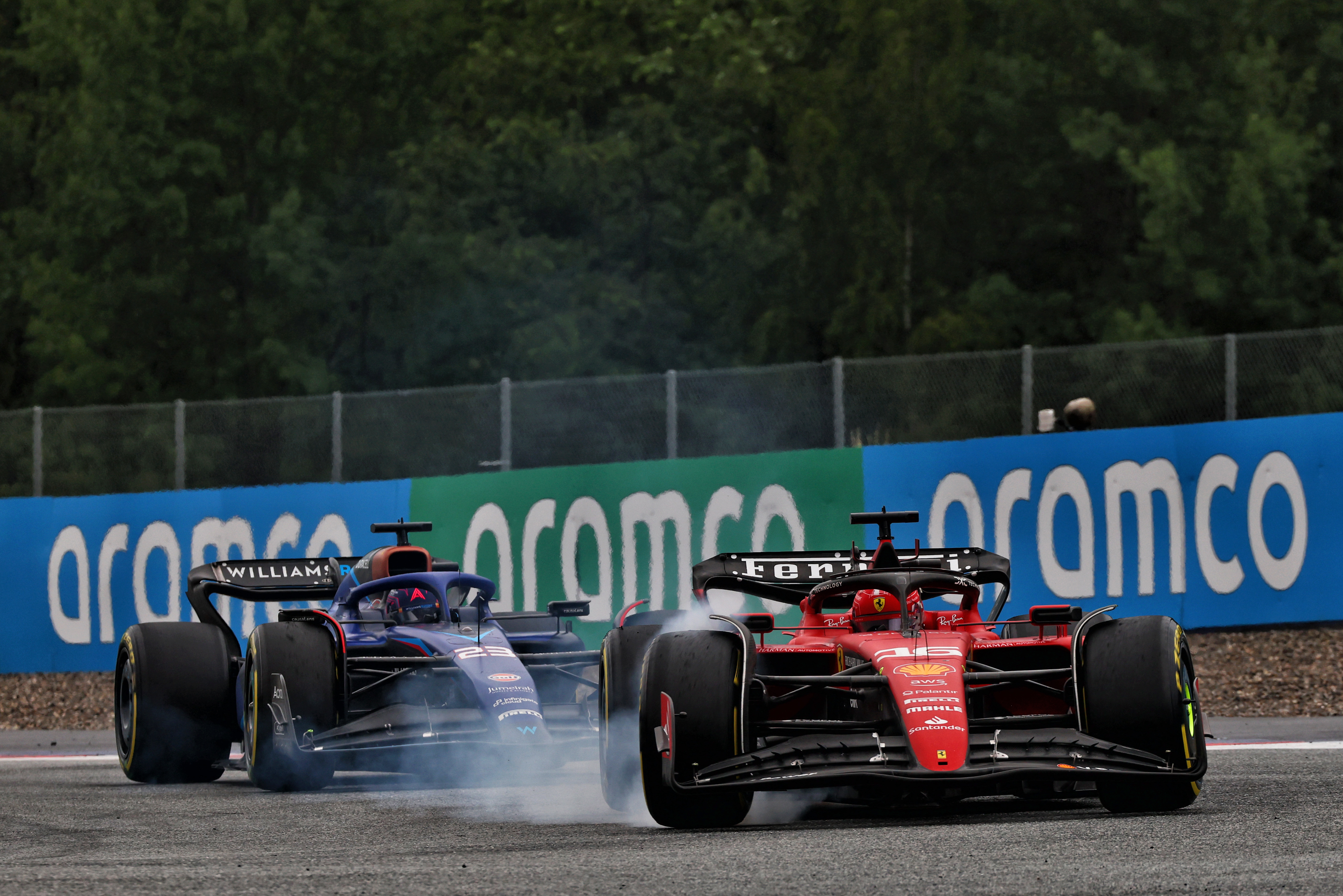
The others who pitted did so from way further back and with so few laps left they were never going to catch the leaders. Their choices were about whether they could gain positions within their group. If you were a quick car artificially further back – a Mercedes, say, – it was a gamble worth taking. If you were Charles Leclerc, frustrated at not being able to pierce Lando Norris’s defence of ninth place, that was also worth throwing the dice for and doing the opposite of whatever Norris did.
Norris stayed out, so Leclerc pitted. But it was late, three laps after George Russell haв initiated the stops. Too late as it turned out (see below), but a drop from 10th place to 12th was inconsequential with points only for the top eight anyway.
How the midpack fared in the Austrian GP sprint
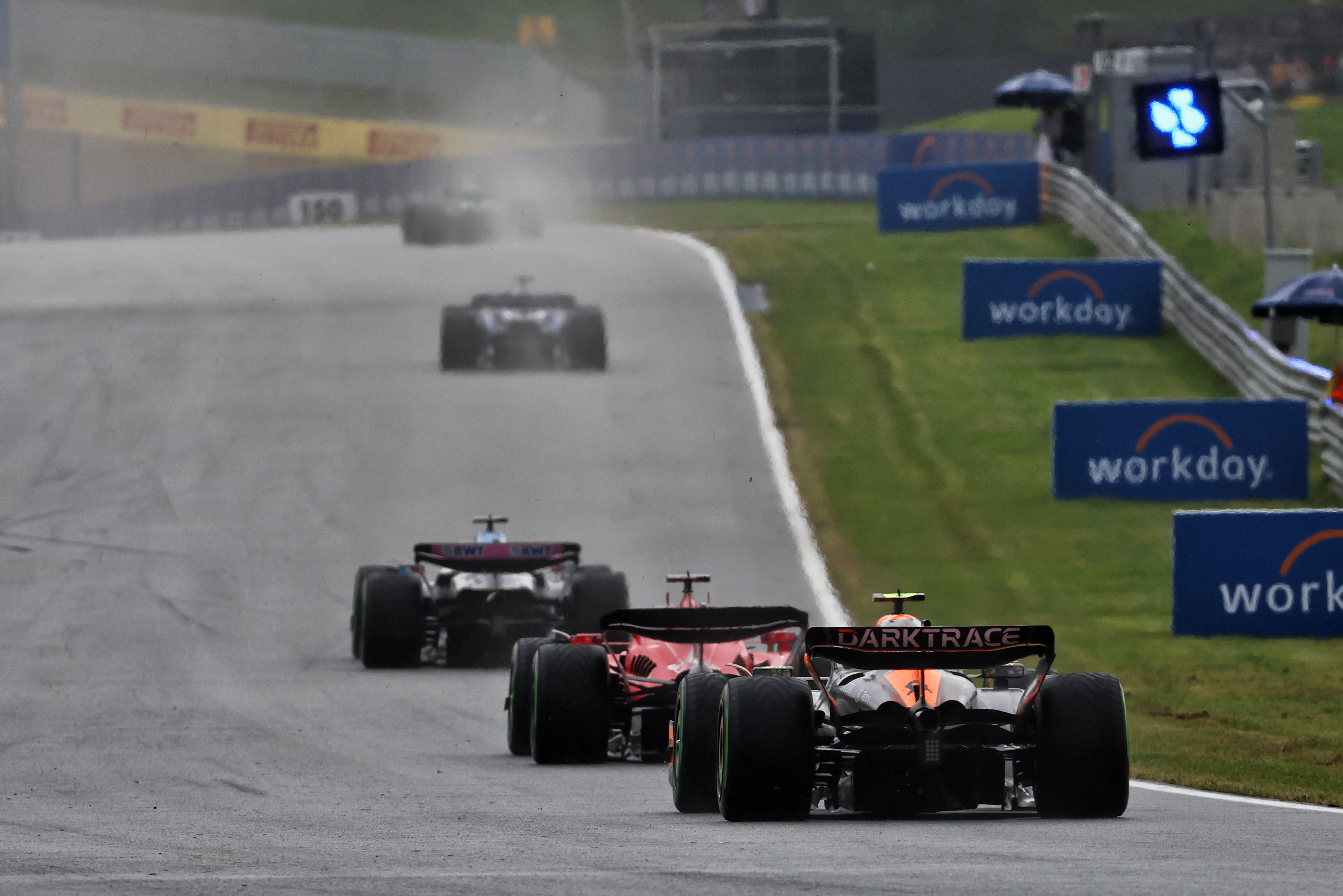
Hulkenberg – Held position (6th) by coming in
Russell – Gained 3 places (to 8th) by coming in
Hamilton – Gained 2 places (to 10th) by coming in
Albon – Lost 5 places (from 7th) by coming in
Ocon – Made up 1 place (to 7th) by staying out
Norris – Held position (9th) by staying out
Leclerc – Lost 2 places (to 12th) by coming in
Russell

Russell called it perfectly. On lap 15, with eight to go, he was running 11th around half a minute behind leader Max Verstappen and about to catch the squabbling Ocon/Leclerc/Norris group, and without DRS their pace was effectively being dictated by the fast-on-the-straight Williams of Albon in front of them. A stop would cost Russell 20s.
Whether the faster laptimes he’d be able to do on slicks would be enough to overcome 20s in eight laps was only one part of the equation. The other was whether he’d be able to pass any slower cars ahead of him after rejoining when it was still damp off-line, and how many of them there would be. Obviously, that would be in the realms of game theory as there was no predicting the choices of those around him.
But he and his strategy team called it. If they were going to do it, Russell was emphasising, they needed to do it very soon – before the squabbling group ahead. Nothing to lose then. He took the initiative and filed off into the pitlane entry road even before the team had confirmed the decision.
On his out-lap he was convinced he’d called it wrong. “It’s raining,” he cried out as he accelerated between Turns 3 and 4. “It’s not raining here,” his engineer tried to reassure him.
“No, it’s raining, mate,” Russell complained again a few corners later. “We’re not seeing any more rain for the remainder,” he was told in response. “Just concentrate on getting those tyre temperatures.” He was the slowest car on track on that lap as the slicks took a time to reach temperature.
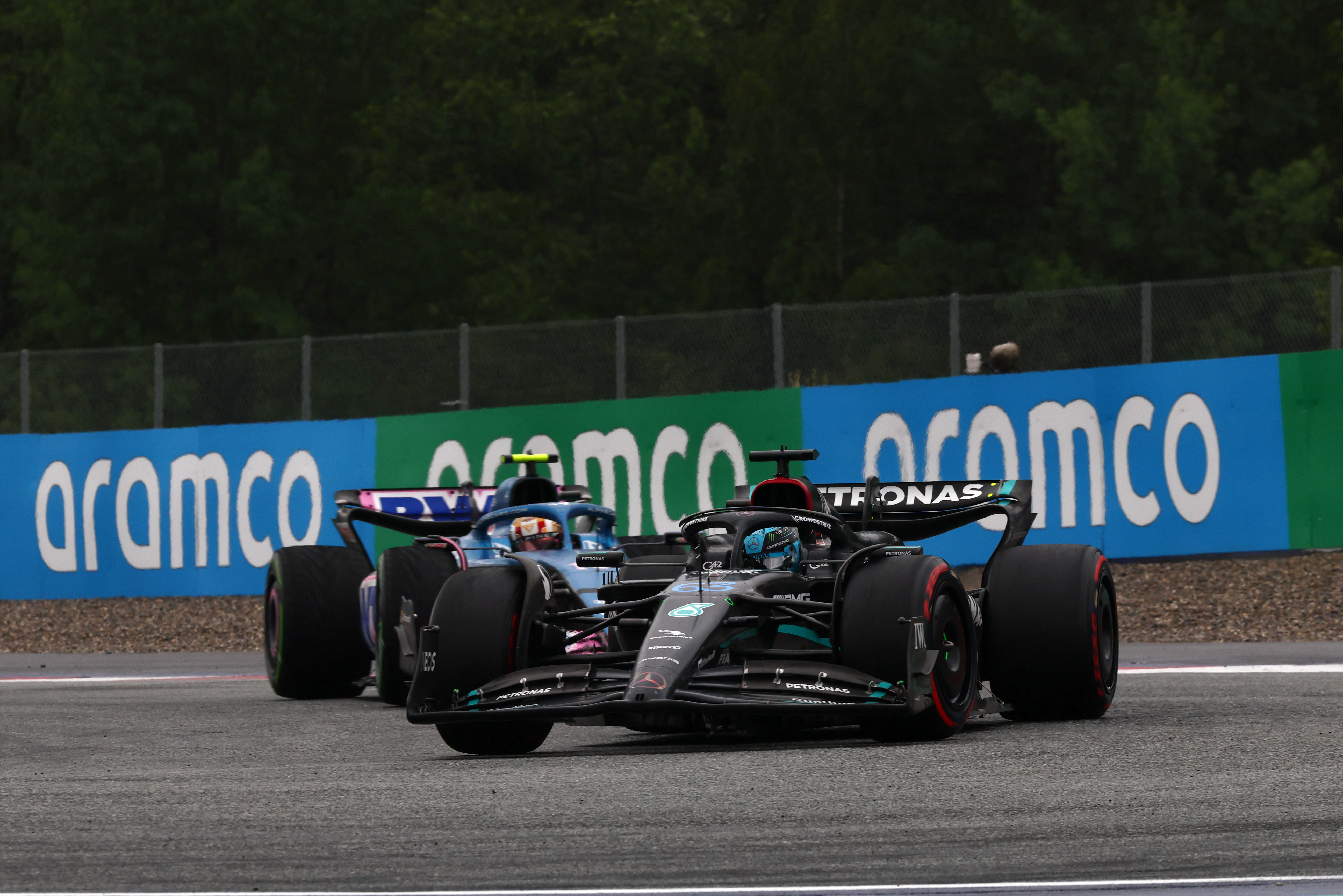
But on the next lap, tyres up to temperature, he was the fastest. And by quite some margin. This was working beautifully, after all. Especially as DRS had now been enabled by race control as the track dried. Hamilton was brought in two laps later and such had been Russell’s struggle on that initial out-lap that Hamilton was able to overcut ahead, but on cold tyres he had nothing with which to defend from the now fully-up-to-temperature tyres and on his own out-lap was easily passed by Russell.
Albon and Leclerc, who’d been several places ahead of Russell, pitted three laps later – and that turned out to be too much. The time they lost to the slick-tyred Russell in the latter two of those three laps brought them out behind.
With those two taking themselves out of contention, Russell’s next target was Norris. With way more traction out of Turn 3, that was an easy pass on the penultimate lap. One lap left to catch Ocon. He failed to catch him on the line by 0.009s. Similarly, Hamilton ran out of laps in his chase of Norris.
Albon and Hulkenberg
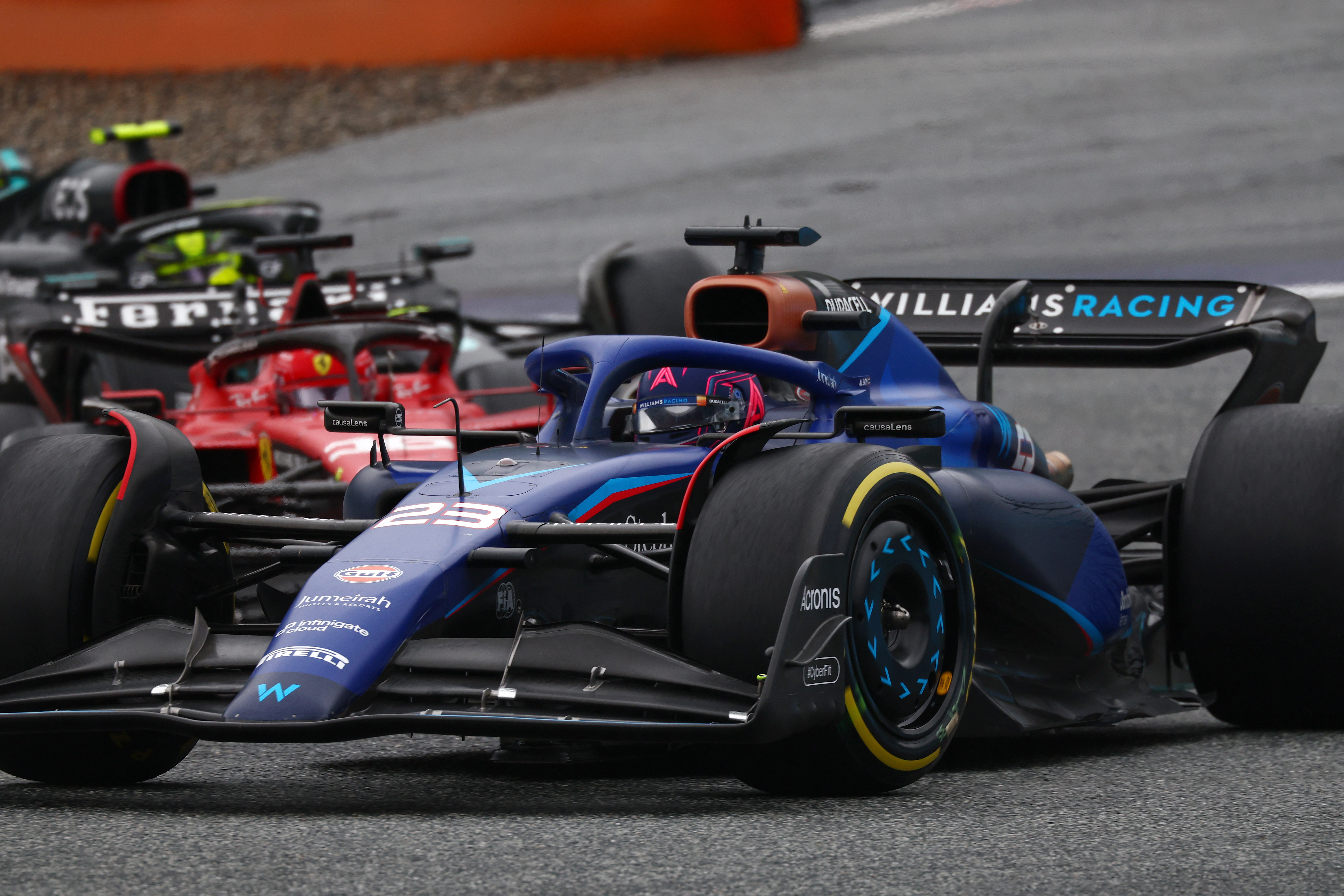
Their fates were linked. Albon was running an overachieving seventh and keeping the faster cars of Ocon, Norris and Leclerc behind him by dint of his straightline speed and lack of DRS. Hulkenberg – who’d run an early second before being passed by the faster cars of Perez and Carlos Sainz – wasn’t long going to be able to retain fourth. The Haas is always the first to find a tyre overheating trait and so his inters were wearing rapidly.
He was being protected from further pain by the Albon roadblock. Nonetheless, he was being caught quickly by the Aston pair Lance Stroll and Fernando Alonso. As the decision time approached the Astons were up to 2s faster, Stroll overtook and Alonso was surely about to do the same. It was a no-brainer decision then to stop, on lap 17. He took the sixth place he’d have taken even if his inters had lasted the distance – and they may not have – after three overtakes late on.
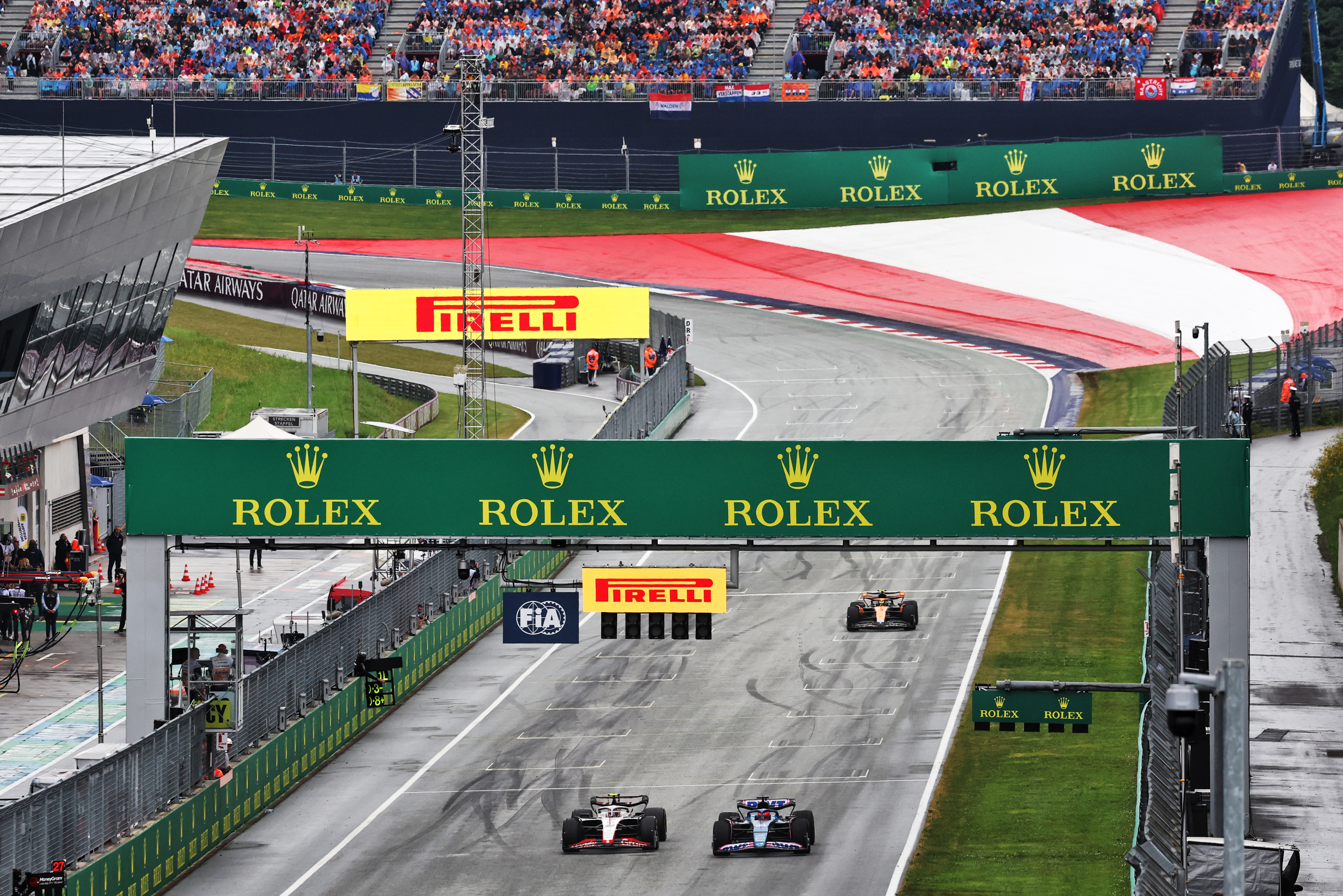
Albon tried to hang on but once DRS had been enabled his chances of retaining seventh looked doomed (although not to Albon himself).
Ocon, Norris and Leclerc were coming at him and would surely all pass in a big hurry without the protection of an unactivated DRS. Furthermore, he was way too far behind the Astons to benefit from their DRS.
Had he pitted at the time of the Mercedes rather than three laps after Russell, he’d have stood a chance of hanging onto a points-paying position.
Albon, for his part, contended that he had sufficient life left in his inters, and felt he was in good shape to run without stopping. “We should’ve scored points today. We would’ve I think comfortably held off Esteban.”
There was no one-size-fits-all right answer. Only those from Hulkenberg down were even placed in the dilemma – and within that group there was in hindsight a three-lap sweet spot to change between laps 15-17.

